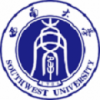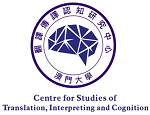| Attachment | Size |
|---|---|
| 280.17 KB |
Este trabajo pionero del Dr. Adolfo M. García ofrece una visión exhaustiva de la traducción y la interpretación desde una perspectiva cerebral. Primero, el libro describe la base metodológica y conceptual de los enfoques psicobiológicos frente a otros abordajes cognitivos en la traductología. Luego pasa a sistematizar la evidencia neuropsicológica, neurocientífica y conductual sobre temas centrales, como la lateralización de las redes involucradas en procesos croslingüísticos; su relación con otros mecanismos verbales; la organización funcional y la dinámica temporal de los circuitos que intervienen en distintas direcciones de traducción, niveles de procesamiento y unidades verbales; las adaptaciones neuroplásticas del sistema durante la formación específica; y los correlatos externos de sus operaciones principales. Por último, el volumen discute las contribuciones, fortalezas, debilidades y necesidades del campo. Gracias a su estilo riguroso pero a la vez pintoresco y didáctico, el texto resulta ameno no sólo para investigadores en traductología cognitiva, bilingüismo y neurolingüística, sino también para docentes y profesionales de áreas afines. En pocas palabras, esta monografía establece una plataforma esencial para que los estudios de la traducción y la interpretación interactúen de modo productivo con las neurociencias cognitivas.
This groundbreaking work by Dr. Adolfo M. García offers a comprehensive account of brain-based research on translation and interpreting. First, the volume introduces the methodological and conceptual pillars of psychobiological approaches vis-à-vis those of other cognitive frameworks. Next, it systematizes neuropsychological, neuroscientific, and behavioral evidence on key topics, including the lateralization of networks subserving cross-linguistic processes; their relation with other linguistic mechanisms; the functional organization and temporal dynamics of the circuits engaged by different translation directions, processing levels, and source-language units; the system’s susceptibility to training-induced plasticity; and the outward correlates of its main operations. Lastly, the book discusses the field’s accomplishments, strengths, weaknesses, and requirements. Its authoritative yet picturesque, didactic style renders it accessible to researchers in cognitive translatology, bilingualism, and neurolinguistics, as well as teachers and practitioners in related areas. Succinctly, this piece establishes a much-needed platform for translation and interpreting studies to fruitfully interact with cognitive neuroscience.










































